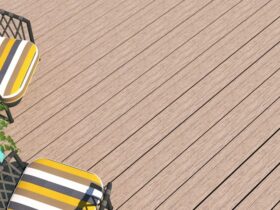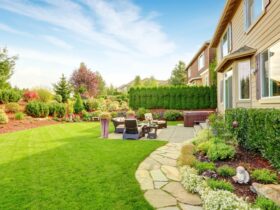What is Landscape Architecture?
Landscape architects are critical in developing landscape interventions that contribute to environmental sustainability. As we discussed in our previous article on architectural developments that are here to stay, sustainability and climate adaptation techniques have not only become more prominent, but are also here to stay.
Sustainable landscape architecture strives to integrate ecological design elements into the structure. The primary objective is to achieve a beautiful balance between green life and architecture in order to conserve biodiversity and raise living standards. Green buildings are planned in such a way that they can be constructed in such a way that they have a minimal negative effect on the climate.
Environmentally sustainable architecture (or environmentally aware design, eco-design) is a design theory that adheres to the ideals of ecological sustainability when it comes to physical things, the built environment, and facilities.
There are some fundamental concepts of environmental design that the majority of designers remember when scoping out their design proposals. Among them are the following:
Choosing low-impact materials
This can be accomplished by using goods that integrate a high proportion of recycled material into the production process. Additionally, designers can choose locally sourced materials to minimize the carbon footprint associated with transporting materials to the project site with gardening services Singapore.
Choosing energy-efficient materials
Designers can also take the time to consider the fundamental production processes of a material and focus their selection on the amount of energy used to produce the material.
Choosing fabrics that are long-lasting or that can be recycled/reused indefinitely
Through comprehending the design’s specifications and background, landscape architects may choose robust materials that require little interference and upkeep. The other school of thinking is to use items that can be reused or recycled, since design sensibilities or environmental factors can indicate the need for an overall design upgrade as the years pass.
Increased emphasis on sustainable design standards
Several international and domestic organizations and landscape company Singapore have developed sustainable design standards. An international organization is the UK-based LEEDS certification scheme, which uses a rigorous criteria to rate goods for their sustainability attributes. Through consulting these organizations’ directories or requesting environmental design certifications from suppliers, architects will save time finding the material’s sustainability controls.
That is not to suggest that environmentally sustainable architecture is uninteresting or devoid of creativity. Numerous material manufacturers have worked to create materials that are both aesthetically appealing and environmentally friendly, while also being suitable for a range of innovative applications. At Jonite, our line of reinforced stone grates and panels contains at least 30% recycled material, and our research and development team is constantly working to improve the recycled quality of all our items. We recognized the elegance of stone and desired to produce something that is both beautiful and practical, capable of being used in a wide variety of applications.











